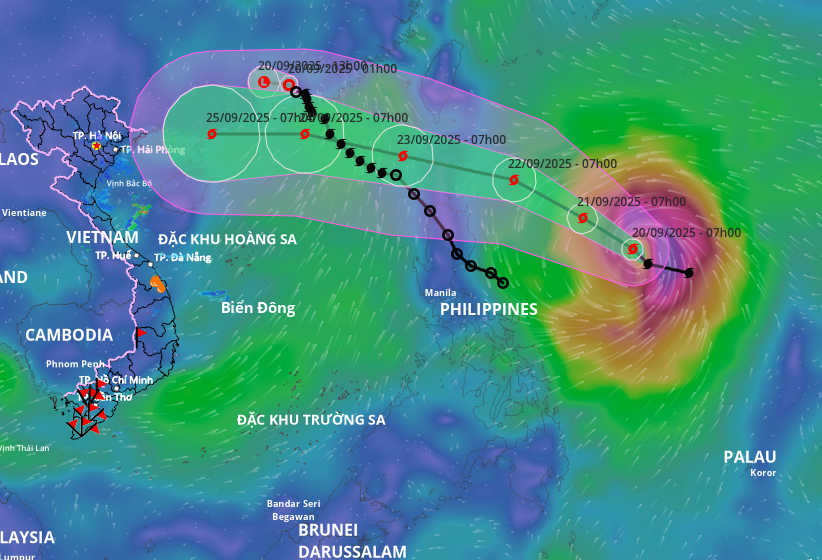According to the National Center for Hydro-Meteorological Forecasting, on the morning of 20/9, Typhoon Ragasa was located 750 km east of Luzon Island (Philippines), with maximum sustained winds of 117 km/h (category 11), gusting to category 14. It was moving west-northwest at 15 km/h.
By 7 a.m. tomorrow, the typhoon is forecast to be about 530 km from Luzon, with winds reaching category 13, gusting to 16. On 22/9, the typhoon is expected to approach northeast Luzon, reaching category 15 with gusts exceeding category 17. It is then predicted to enter the East Sea (South China Sea), reaching category 15-16, gusting above 17, and moving west-northwest at 20-25 km/h.
 |
Projected path of Typhoon Ragasa, morning of 20/9. Photo: *Disaster Monitoring System* |
The Japan Meteorological Agency predicts that Ragasa could reach 180 km/h upon entering the East Sea, while the Hong Kong Observatory forecasts wind speeds of 205 km/h, maintaining super typhoon status as it approaches the coast of Guangdong (China).
Due to the typhoon's influence, from the afternoon of 22/9, the northeastern area of the East Sea will experience strong winds of categories 6-7, later increasing to categories 10-13. Near the typhoon's center, winds will reach categories 14-16, gusting above 17, with waves exceeding 10 m.
The National Steering Committee for Natural Disaster Prevention and Control has requested provinces from Quang Ninh to Lam Dong to closely monitor the typhoon's development, issue warnings to vessels, and prepare search and rescue forces.
Since the beginning of the year, the East Sea has seen 8 typhoons and 2 tropical depressions. Yesterday, Typhoon Mitag made landfall in China without directly impacting Vietnam. Typhoon Tapah, while not directly impacting Vietnam, brought heavy rain and landslides to several northern mountainous provinces. Typhoon Nongfa hit central Vietnam in late August with category 8 winds, isolating many mountainous areas in Ha Tinh, Quang Tri, and Nghe An.
From October to December, the number of typhoons and tropical depressions is forecast to be higher than the multi-year average (more than 4 storms on average, with nearly 2 making landfall).
Gia Chinh











